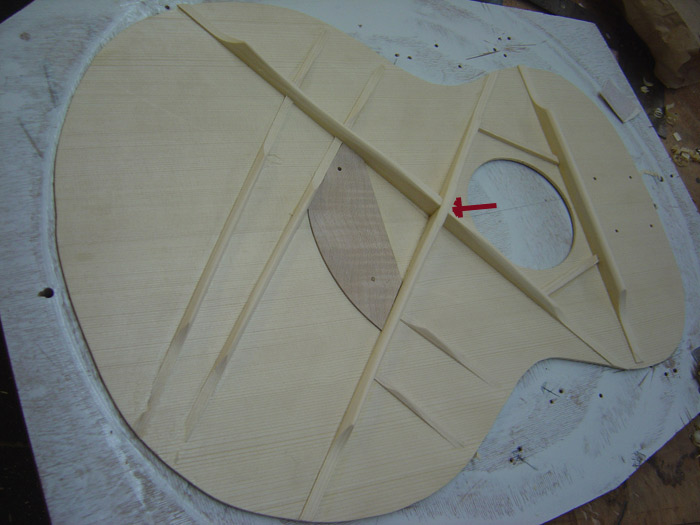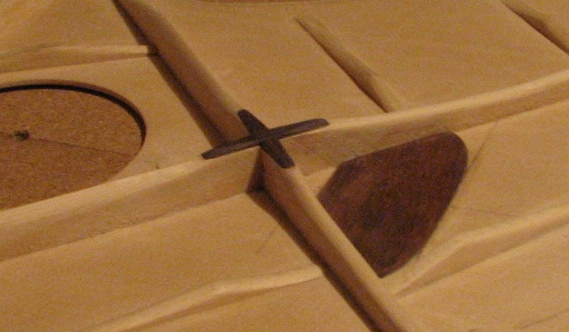Thanks Pete.
Yes, the brace with the cuttout facing 'down', into the body, will be much less stiff at that point than the other one, because the top bridges the gap that faces 'up'. You might not notice much difference in stiffness in the completed guitar, but on the 'free' plate the change can be dramatic. As was pointed out, it's mostly the shapes of the 'free' plate resonant modes that are effected, with the lower order ones becoming much more symmetric with the cap on.
It can be argued that the 'free' plate modes will all be changed when the top is glued on, and that therefore they are not important. My experinece is that they are, and that, in particular, the shapes of those modes can tell you a lot about how well the guitar will work. 'Closed' and symmetric modes seem to make the best guitars.
Whether or not you agree about the sound, there is one thing that little cap does for sure: it helps keep the brace from splitting. That downward facing opening is a beaut of a stress riser, and it's right where there is a a lot of downward force on the top due to the bridge torque. I've lost track of the number of cheap guitars I've fixed with split braces at that point. Even the little cloth patch helps, but there's nothing like a wood one for peace of mind.
|

